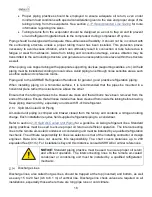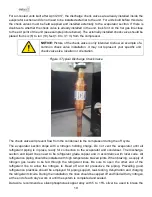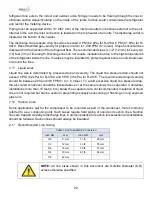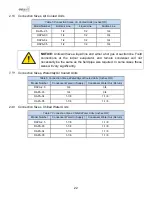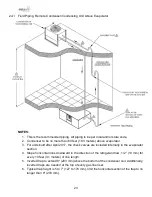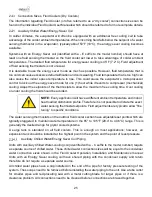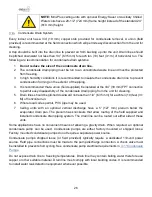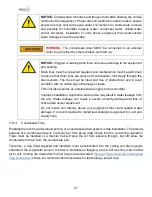
18
•
Proper piping practices should be employed to ensure adequate oil return, even under
minimum load conditions with special consideration given to the size and proper slope of the
tubing coming from the evaporator. See section
information regarding line sizes.
•
Tubing returns from the evaporator should be designed so as not to trap oil and to prevent
oil and refrigerant migration back to the compressor during compressor off cycles.
Piping should be designed with adequate three-dimensional flexibility. It should not be in contact with
the surrounding structure unless a proper tubing mount has been installed. This protection proves
necessary to avoid excess vibration, which can ultimately result in connection or tube failure due to
fatigue or wear from abrasion. Aside from tubing and connection damage, excess vibration may be
transmitted to the surrounding structure and generate an unacceptable noise level within the structure
as well.
When piping, use copper tubing with appropriate supporting devices (supporting saddles, etc.). All field
piping must be installed according to local codes. Avoid piping runs through noise sensitive areas, such
as office walls and conference rooms.
Piping and to the ASHRAE Refrigeration Handbook for general, good practice refrigeration piping.
When installing piping on a horizontal surface, it is recommended that the pipes be mounted in a
horizontal plane rather than stacked one above the other.
Ensure that the tubing surfaces to be brazed are clean and that all burrs have been removed from the
ends of the tubes. Ensure that all loose material has been cleaned from inside the tubing before brazing.
Keep piping clean and dry, especially on units with R-410A refrigerant.
Split Air-Cooled Unit Piping
Air-cooled unit piping is crimped and brazed closed from the factory and contains a nitrogen holding
charge. Each installation requires field supplied refrigerant piping to a condenser.
2.13 Split Air-Cooled Unit Piping
for a guideline on sizing refrigerant lines. Standard
piping practices must be used to ensure proper oil return and efficient operation. The interconnecting
lines to the remote air-cooled condenser or condensing unit must be installed by a qualified refrigeration
mechanic. The ultimate responsibility for line size selection is that of the installing contractor or design
engineer. Data Aire does not assume this responsibility. The chart covers distances up to 200
equivalent feet (61 m). For installations beyond this distance, consult ASHRAE or similar references.
NOTICE:
Standard piping practice must be used to ensure proper oil return
and efficient operation. The interconnecting lines to the remote air-cooled
condenser or condensing unit must be installed by a qualified refrigeration
mechanic.
Discharge Lines
Discharge lines, also called hot gas lines, should be trapped at the top (inverted) and bottom, as well
as every 15 to 20 feet (4.6 to 6.1 m) of vertical rise. Discharge line check valves are required on all
installations, especially those where there are long pipe runs or cold climate.
Summary of Contents for DA PA-04
Page 1: ......
Page 81: ...DAP IOM_10 2022 ...















